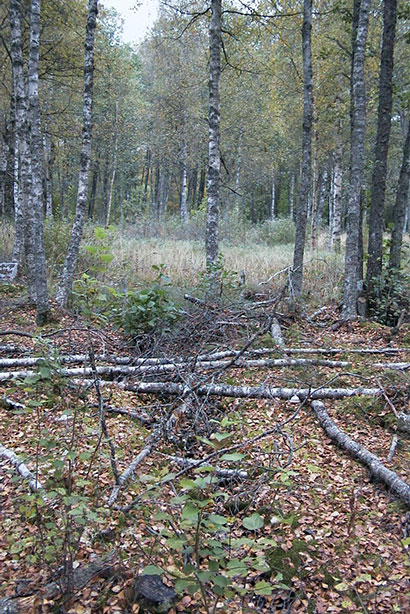Hidden greenhouse emissions revealed in new Board of Agriculture report

Restoring drained ground to wetland reduces the release of both carbon dioxide and nitrous oxide from the ground. Photo: Karin Hjerpe.
Former wetlands that have been drained and which are currently used for forestry and agriculture give off 11.4 million tons of carbon dioxide equivalents. That can be compared with Sweden's total emissions of 57.6 million tons (when the land use sector is not included). But in Sweden's report to the Climate Convention, emissions from drained peatland are not visible since they are included with forest growth.
New report from the Swedish Board of Agriculture shows the way
The report Emissions of Greenhouse Gases from Peatland shows that drained peatlands should be restored into wetlands so as to reduce greenhouse gas emissions. Studies of greenhouse gas emissions from drained peatlands that are used for forestry production show that nutrient-rich, well-drained areas of land release more greenhouse gases than nutrient-poor, wetter grounds do.
“The report states that some three percent of Sweden's land area is drained peatland and it discusses which of these areas should be rectified in the first instance,” says Åsa Kasimir, researcher at the Department of Earth Sciences, University of Gothenburg.
She is one of the authors of the report which was published this year. The report has been produced by the Swedish Board of Agriculture (Jordbruksverket), the Swedish Forest Agency (Skogsstyrelsen), the Swedish Environmental Protection Agency (Naturvårdsverket), the Swedish University of Agricultural Sciences (SLU), the Federation of Swedish Farmers (LRF), Stockholm University and the University of Gothenburg.
Restored land reduces total emissions
Restoring drained ground to wetland reduces the release of both carbon dioxide and nitrous oxide from the ground. Although the release of methane will increase in the long term, the decrease of carbon dioxide and nitrous oxide will be greater which means that, all in all, greenhouse gas emissions from the ground will be reduced.
“Because a reduction in greenhouse gas emissions is now urgently needed, restoring wetlands is an effective environmental measure,” says Åsa Kasimir.
New regulations needed to bring about change
In order to restore drained peatland, initiatives are needed by decision-makers. “Some conceivable ways of doing this would be for the government to issue guidelines or offer support,” says Åsa Kasimir.
“Political measures must comprise either a reward or a penalty. Either landowners pay for their greenhouse gas emissions or the government pays landowners to restore their drained land to wetland. The latter is probably a more likely route since the government used to advocate drainage. The new Rural Development Programme (Landsbygdsprogrammet) could be a way forward.”
Establishing wetlands can also give other benefits such as increased biological diversity and it may reduce nutrient leaching into lakes and watercourses.
Contact:
Åsa Kasimir, Department of Earth Sciences
asa.kasimir@gu.se, +46(0)31-786 1960, +46(0)704-911361
http://science.gu.se/english/News/News_detail//hidden-greenhouse-emissions-revea…
Media Contact
All latest news from the category: Earth Sciences
Earth Sciences (also referred to as Geosciences), which deals with basic issues surrounding our planet, plays a vital role in the area of energy and raw materials supply.
Earth Sciences comprises subjects such as geology, geography, geological informatics, paleontology, mineralogy, petrography, crystallography, geophysics, geodesy, glaciology, cartography, photogrammetry, meteorology and seismology, early-warning systems, earthquake research and polar research.
Newest articles

Silicon Carbide Innovation Alliance to drive industrial-scale semiconductor work
Known for its ability to withstand extreme environments and high voltages, silicon carbide (SiC) is a semiconducting material made up of silicon and carbon atoms arranged into crystals that is…

New SPECT/CT technique shows impressive biomarker identification
…offers increased access for prostate cancer patients. A novel SPECT/CT acquisition method can accurately detect radiopharmaceutical biodistribution in a convenient manner for prostate cancer patients, opening the door for more…

How 3D printers can give robots a soft touch
Soft skin coverings and touch sensors have emerged as a promising feature for robots that are both safer and more intuitive for human interaction, but they are expensive and difficult…




















